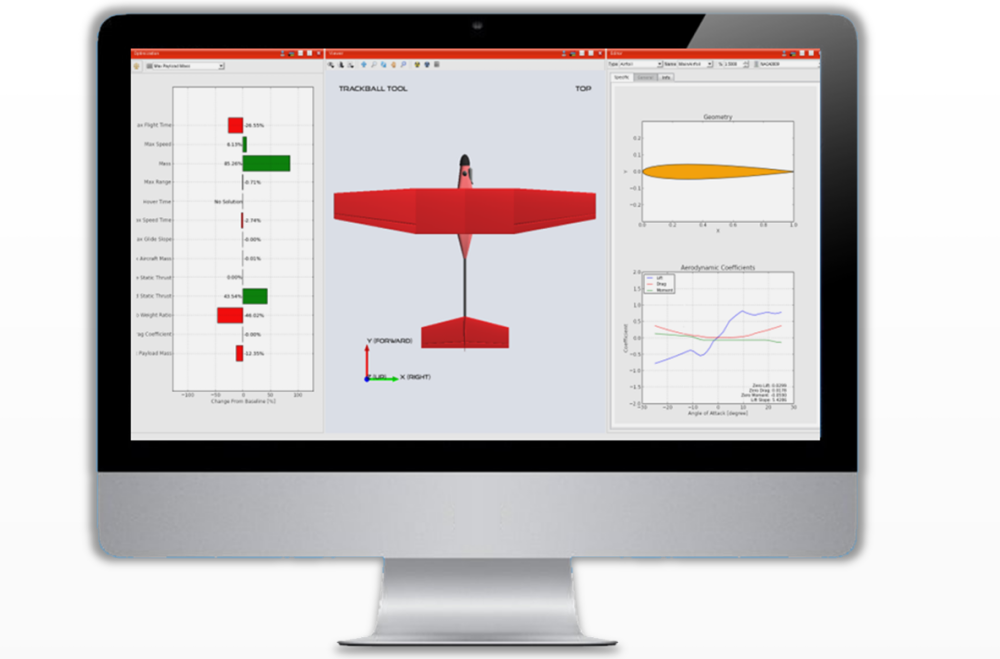 As career opportunities in the Unmanned Aerial Vehicle (UAV) field evolve, universities around the globe are offering varied degrees related to UAV engineering, operation, and maintenance. Designing, operating and maintaining UAV systems requires knowledge in a number of different fields including mechanical, aerospace, and computer engineering. ComQuest Ventures LLC is working with a number of leading UAV academic institutions to leverage its Typhon UDX UAV design and simulation software to facilitate and enhance education in these areas.Typhon UDX: The UAV Design Explorer is an integrated software package for accelerated design, analysis and simulation of UAV airframes and their flight control systems. It offers a real-time interactive and visual design environment where designs ranging from fixed-wing aircraft to multicopter and Vertical Take-off and Landing (hybrid or VTOL) systems can be quickly analyzed and simulated. As such, it is an ideal learning tool for students which can be used for in-class demonstrations, hands-on projects, capstone courses, or graduate-level research projects.Typhon UDX is being deployed in aerospace engineering courses, where it can be used to teach subjects such as aircraft design, aerodynamics, and flight dynamics and control. Real-time performance predictions allow students to gain an intuition of how design choices affect aircraft performance, complementing the theoretical understanding already offered by the courses. At the same time, the high-fidelity simulation capability allows students to have hands-on experience in operating a UAV, an experience which is often not possible due to time and budget constraints. The software also allows students to create their own flight control code using the popular Python scripting language. In this way students can learn basic to advanced concepts in flight control theory.Typhon UDX is also used for UAS operation training and mission planning through software- and hardware-in-the-loop simulations. The software is capable of simulating specific UAV platforms, with specific ground control station interfaces in varied flight environments and environmental conditions. Thus, students can learn how to operate specific Unmanned Aerial Systems in a virtual environment, complementing and enhancing existing training methods offered by the academic institutions.
As career opportunities in the Unmanned Aerial Vehicle (UAV) field evolve, universities around the globe are offering varied degrees related to UAV engineering, operation, and maintenance. Designing, operating and maintaining UAV systems requires knowledge in a number of different fields including mechanical, aerospace, and computer engineering. ComQuest Ventures LLC is working with a number of leading UAV academic institutions to leverage its Typhon UDX UAV design and simulation software to facilitate and enhance education in these areas.Typhon UDX: The UAV Design Explorer is an integrated software package for accelerated design, analysis and simulation of UAV airframes and their flight control systems. It offers a real-time interactive and visual design environment where designs ranging from fixed-wing aircraft to multicopter and Vertical Take-off and Landing (hybrid or VTOL) systems can be quickly analyzed and simulated. As such, it is an ideal learning tool for students which can be used for in-class demonstrations, hands-on projects, capstone courses, or graduate-level research projects.Typhon UDX is being deployed in aerospace engineering courses, where it can be used to teach subjects such as aircraft design, aerodynamics, and flight dynamics and control. Real-time performance predictions allow students to gain an intuition of how design choices affect aircraft performance, complementing the theoretical understanding already offered by the courses. At the same time, the high-fidelity simulation capability allows students to have hands-on experience in operating a UAV, an experience which is often not possible due to time and budget constraints. The software also allows students to create their own flight control code using the popular Python scripting language. In this way students can learn basic to advanced concepts in flight control theory.Typhon UDX is also used for UAS operation training and mission planning through software- and hardware-in-the-loop simulations. The software is capable of simulating specific UAV platforms, with specific ground control station interfaces in varied flight environments and environmental conditions. Thus, students can learn how to operate specific Unmanned Aerial Systems in a virtual environment, complementing and enhancing existing training methods offered by the academic institutions.
Source: Press Relaese
